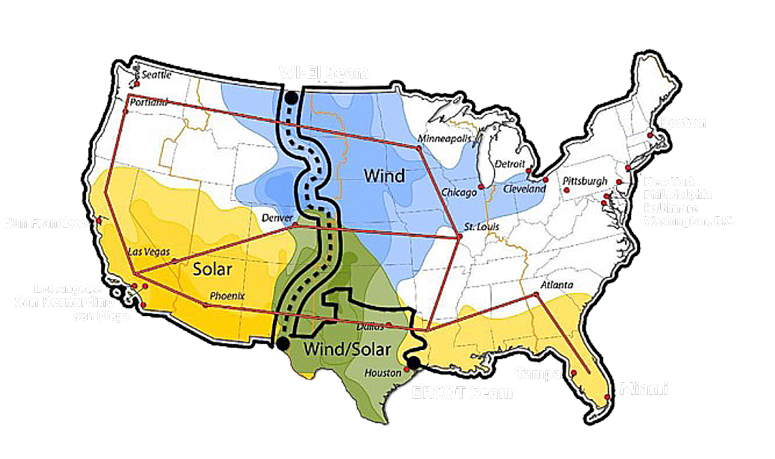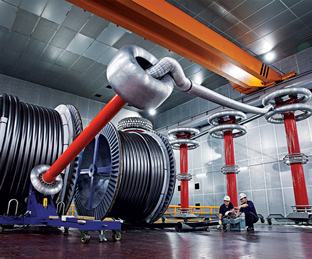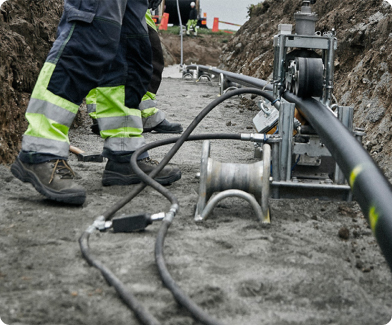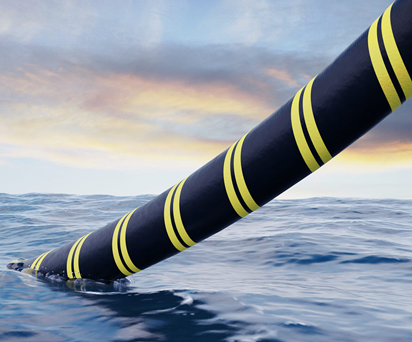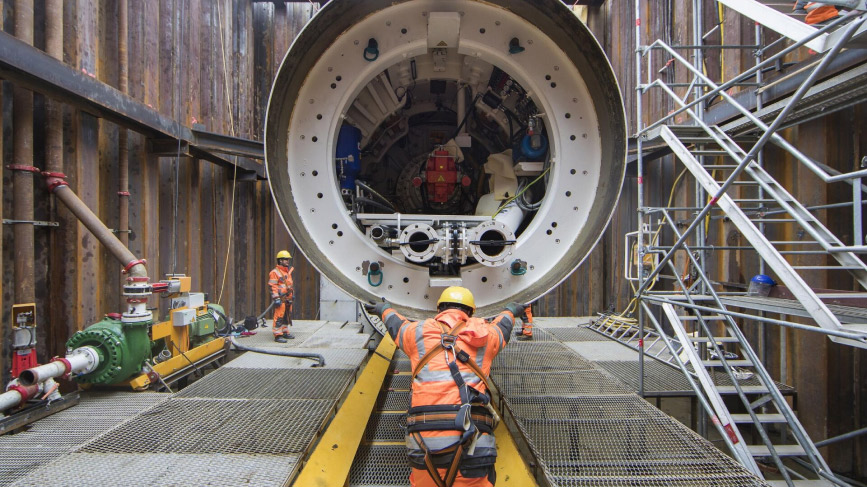Introducing
American Supergrid

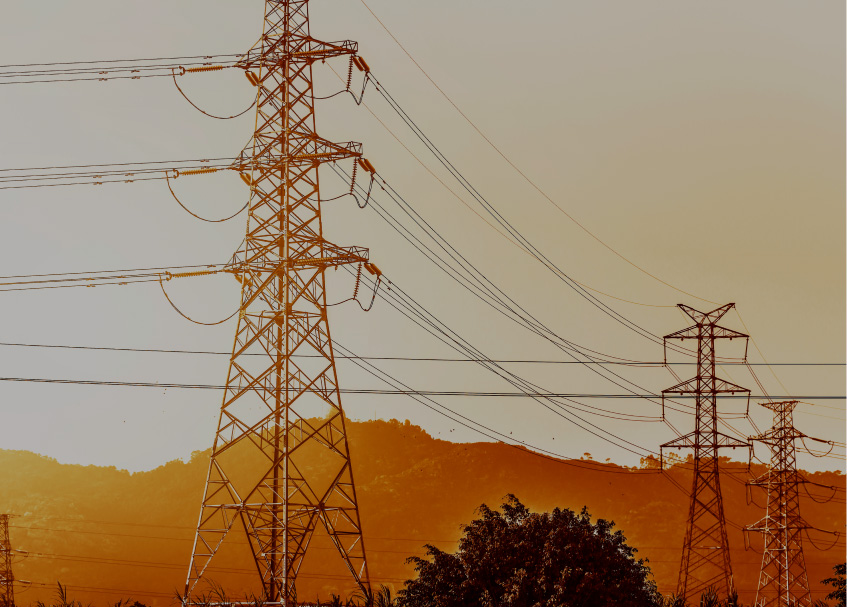
There are three major components of the United States power system: the Western Interconnection, the Eastern Interconnection, and the Electric Reliability Council of Texas. Due to limited transfer capacity, each operates independently and minimal power is transferred between components.
Convalt Energy is developing a nationwide network of HVDC power lines to connect these components. The various power sources will help evacuate electricity from areas with strong potential for solar, wind, and hydro. The goal is to make renewable power America’s major source of electricity by 2030.
There are three phases to this project. One phase is depicted below as it connects solar power generation across the United States, especially in Arizona, Texas, New Mexico, with wind power in Texas, Oklahoma, Iowa, Nebraska, North and South Dakota, Wyoming, and Utah.
